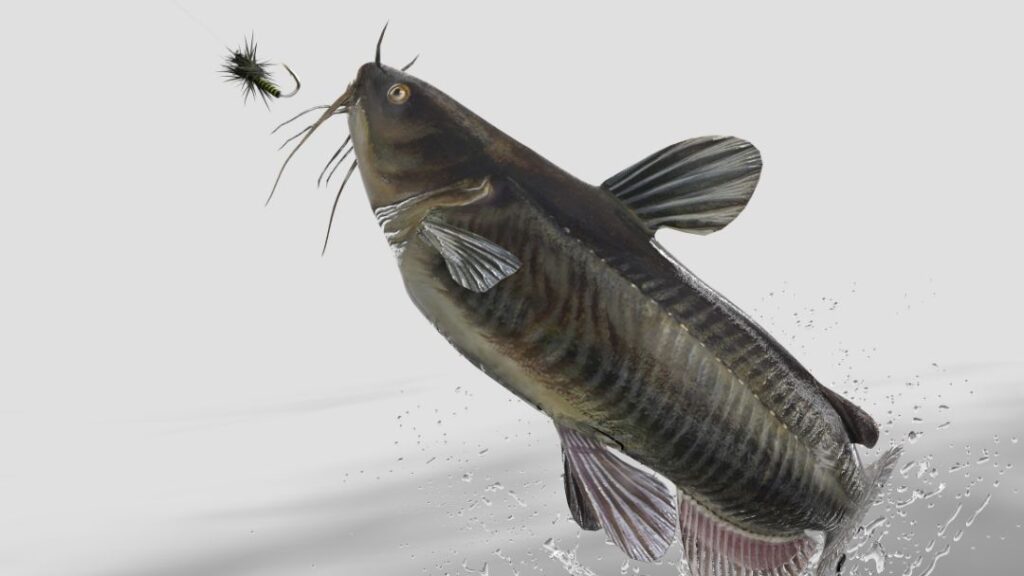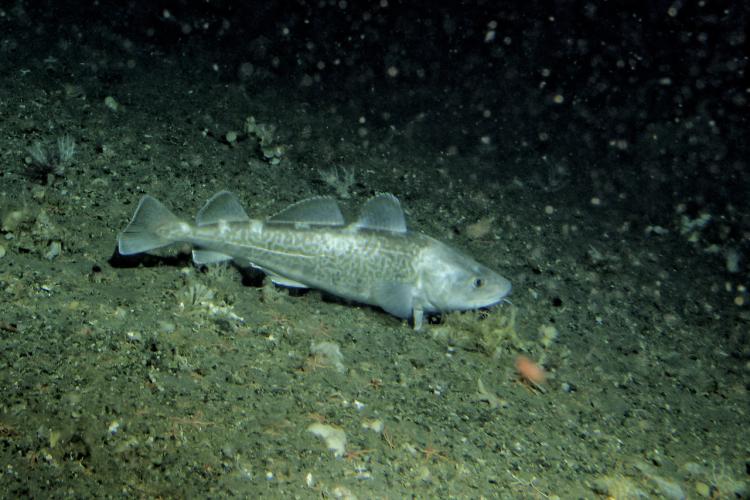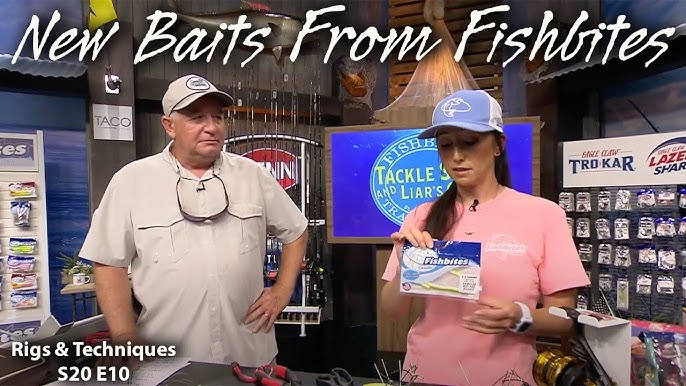What Size Hook Is Good For Catfish?
When it comes to creating the best action and presentation, hook size matters. Hooks come in various sizes. They vary in length, gaps, and thickness. Catfishing can be hard as catfish have a hard and firm mouth. Selecting the correct hook size is crucial to catch your preferred catfish.
What size hook is good for catfish? You can use 02/0 to 6/0 sizes of fishing hooks for smaller and medium-sized catfish. But when you are targeting larger fish (over 30 pounds), it is best to use 8/0 or large-sized hooks. It will vary on various factors, catfish size, bait size and type, hook type, fishing technique, fishing location, water condition, etc.
Why Does Hook Size Matter For Catfishing?
One of the most important things is selecting the right hook size for catfishing. The hook can’t be too big or small.
A regular hook might be too small for Mekong giant catfish. The vast catfish may swallow the hook fully and take it right down into its stomach.
On the contrary, choosing smaller hooks is necessary if you want to catch smaller catfish, such as Bandit Cory or Pareiorhina hyptiorhachis.
The smaller catfish will struggle to bite the hook. Your targeted catfish is more likely to come off the hook.

What Size Hook Is Good For Catfish?
It generally depends on the mouth size of the catfish. The larger the mouth, the bigger the hook size necessary.
Fishing hooks come in “Size 32” to “Size 01” in terms of regular scales. “Size 32” is the smallest size, and “Size 01” is the largest size.
Once the regular scale ends, the Aught scale starts. It begins from 1/0 and can be as high as 27/0. However, Sizes 20/0 to 27/0 are not necessary for regular catfish.
These huge hooks are mainly used for giant predators like tuna, swordfish, and sharks.
Now, the question is: what is the most appropriate hook size for catfishing? According to most experts, sizes 02/0 to 6/0 hooks are enough to catch most catfish types.
You can use them for catching any small, medium, or large-sized blue catfish, channel catfish, and flathead catfish.
| Catfish Size | Catfish Weight | Best Hook Size |
|---|---|---|
| Small | Less than 10 pounds | 2/0 to 3/0 |
| Medium | 12 to 25 pounds | 5/0 to 6/0 |
| Large | More than 30 pounds | 8/0 or larger |
What Factors Affect Choosing The Right Hook Size For Catfishing?
All anglers don’t face the same situation and catch the same type and sizes of fish.
Hence, hooks selection will vary depending on various criteria. Let’s learn about them!
Catfish Size
What sizes of catfish are you going to catch? A simple rule is the larger the catfish, the larger should be the hook size.
For example, if you want to catch larger blue catfish, you can use 8/0 or 10/0 hooks. It is especially necessary for bigger blue catfish as they can be as big as 100 lbs. or more.
When targeting regular channel catfish, you can use 2/0 or 3/0 hooks. They are reliable and standard hook size.
However, if you are targeting giant catfish, you can choose hook sizes over 10/0 sizes depending on how large they are.
Baits Or Lures Size And Type
Do you know matching the hook size to the bait is necessary? A big hook won’t work well with a tiny bait. It will overpower your presentation.
Similarly, you can’t use a tiny hook with a large bait as it is not large and strong enough to properly hook and hold larger fish.
Another important thing to consider is the bait type. Not all kinds of baits or lures will work well for catfish.
One of the most widely used baits or lures for various hook sizing options is “stink baits.” But most anglers prefer to use them for catching small catfish and some bullheads.
If you want to target a good number of small or medium-sized channel catfish and blue catfish, “punch” baits are a good choice.
Hook Type
Another important aspect to consider is the hook type. When it comes to catfishing, anglers can use various kinds of hooks, such as circle hooks, Kahle hooks, Treble hooks, j-hooks, etc.
Your hook type will often determine the most appropriate hook size for a particular catfish.
For instance, if you use a Kahle hook to catch channel catfish, the best hook size is 2/0 or 4/0. But you can use a 5/0 hook size for catching catfish larger than 10 pounds.
Another effective option for catfishing is circle hooks. When you are catching larger catfish, such as bigger blue cats that are 8+ pounds, 5/0 to 6/0 sizes are a good choice.
Treble hooks are especially good for channel catfishing due to their 2X strength and several sharp points. Most experts recommend using 4/0 sizes for this purpose.
Experiences And Preferences
Are you new to catfishing? Catfish are hard-fighting, very smart, and cunning. Beginners who have started their fishing journey recently should use basic mid-sized fishing hooks.
The main advantage of using medium-sized hooks is that they are versatile and effective in targeting various sizes of catfish. You can utilize it in different fishing scenarios.
Another important thing is considering your preferences. Some anglers may use a bit smaller hook than the regular ones as smaller hooks are difficult to see and easy to cast further.
However, many anglers may prefer using larger hooks to avoid hurting the catfish’s mouth. But still, it should not be too big to not fit in a catfish.
Fishing Technique
Anglers can use various types of fishing techniques to catch catfish, such as bottom fishing, finesse fishing, etc. But here, considering some vital criteria is essential.
When you are targeting catfish at the bottom of a deep body of water, such as rivers, lakes, or oceans, you can use 1/0 to 3/0 sizes of hooks.
However, you can’t overlook the crucial consideration of your bait or lure type and weight.
Generally, bigger hooks are needed to handle the weight and bulkiness of larger baits.
In contrast, live bait or smaller artificial lures work well with smaller hooks, especially when you are using finesse fishing techniques.
Hook Strength
If you are targeting any catfish over 15 pounds, prepare for a pugnacious battle.
Do you know what determines the strength of a fishing hook? It is a wire gauge, which can be light, medium, or heavy.
Catching large fish in shaggy or fast water conditions might be challenging.
You want to choose a heavier gauge hook to resist bending and have more control over the fish. They are more appropriate for short-range flipping and pitching.
But when you are targeting smaller catfish from a long distance, Light-wire hooks are the best choice. They are perfect for long casting and sparse coverage.
Make sure to choose fishing hooks made of high-quality materials. Most are made of high-carbon steel and steel alloyed with vanadium or stainless steel.
Fishing Location
Anglers catch fish in various types of environments. Your hook size selection will vary based on these criteria.
For instance, if you are catching catfish in rocky areas, snagging techniques are not effective. Apart from injuring the fish, they are less likely to get caught.
It is best to use larger hooks in such conditions to receive more leverage to hook the fish securely. You can effortlessly remove the hook from the fish’s mouth without breaking it.
Small fishing hooks are also appropriate for fishing in clear or calm water. You can also use smaller hooks in shallow water, such as a stream or a small creek.
Season And Water Temperature
When it comes to catfishing, considering the behavior of fish is important.
Catfish don’t always act the same way. You will see variations in their behavior in different seasons and temperatures.
For instance, water temperature is lower during colder months. Catfish will be less active, picky, and cautious about biting lures or baits.
Using smaller hooks in such conditions is best for better hooksets and increased success.
Tips For Successful Catfishing
You have already learned about the crucial factors to consider when choosing any size of hooks. Here are some bonus tips for your increased success in catfishing.
Don’t Ignore Line Strength Selection
Hook size is surely important. But it doesn’t mean you will overlook selecting the correct line.
Braided fishing lines are one of the best choices for catfishing. They are highly abrasion resistant. You can set hooks immediately as they have no stretch.
20- to 40-pound test lines are widely used for catfishing due to their increased tensile strength and sensitivity.
However, you can also use monofilament lines with a similar strength range. They are made of nylon and are highly forgiving.
Give Special Focus On Leader Material
What type of leader material do you use for catfishing? Catfish have a strong and rough mouth.
You can use nylon- or fluorocarbon-based leaders for catfishing. They can offer additional line strength and abrasion protection.
They have minimal visibility to tackle catfish, almost invisible underwater. Plus, leaders can help your fishing lines to withstand the sharp teeth of the fish.
Make sure to choose a 20 to 40-pound test range. This will increase your hook setup.
Proper Hook Setting
Are you new to catfishing? You may use forceful strikes when a catfish bites your fishing lines.
The hook is more likely to pull out the fish’s mouth. Plus, hooks may become dislodged. Your fishing lines may also break.
Instead, you want to use a firm and steady hookset technique. It will allow you to penetrate the hook appropriately inside the fish’s mouth and increases the likelihood of hooking the fish securely.
Wrapping UP
Hooks come in dozens of sizes. Increasing your catfishing success requires selecting the right hook. A perfect hook is necessary whether you are casting, trolling, or jigging set-ups.
Fishing requires patience. Let the catfish engulf the bait entirely before setting the hook.
If you are not seeing any good results from a particular fishing technique, use another one, depending on the fishing condition and catfish behavior.
Hopefully, you got a clear overview of what size hook is suitable for catfish. Let me know if you still have any queries.





